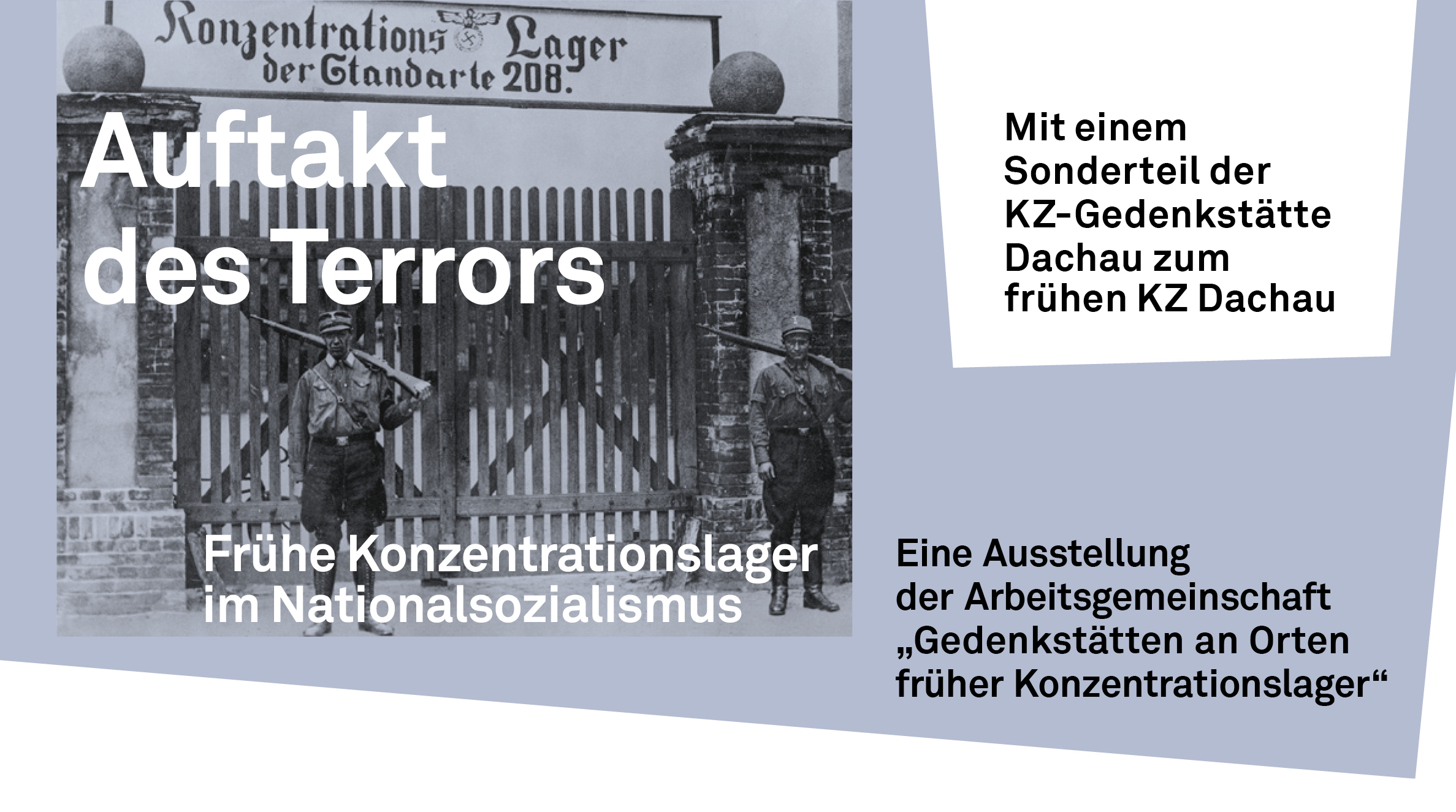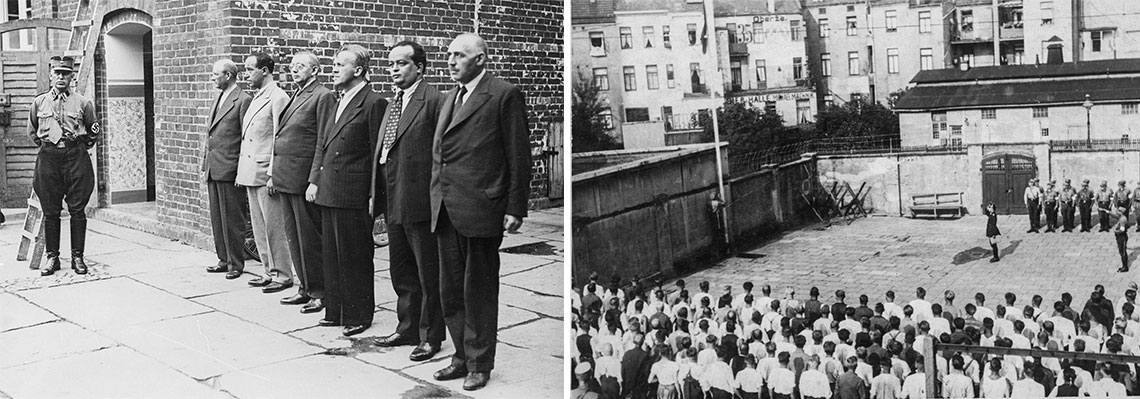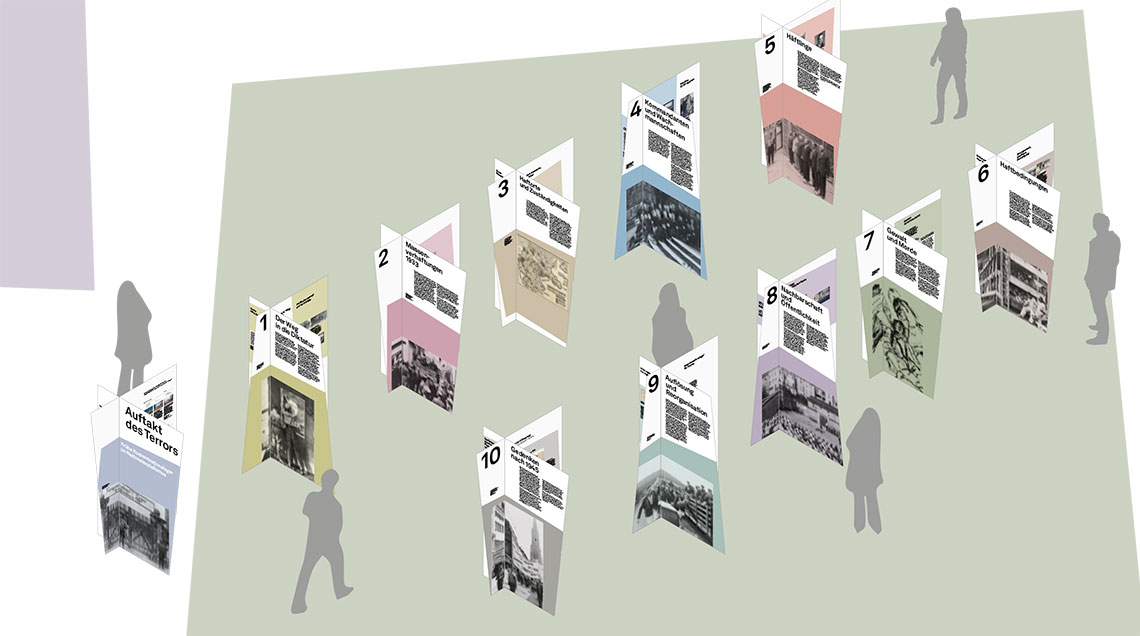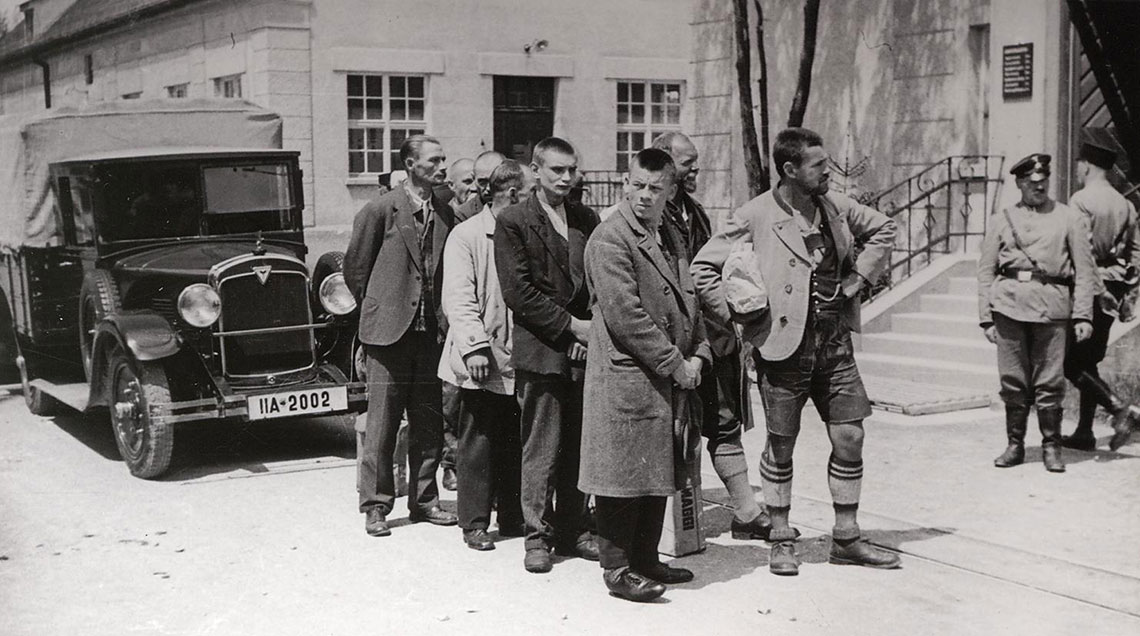Auftakt des Terrors – Frühe Konzentrationslager im Nationalsozialismus
| 22.03.2023 — 10.12.2023

Please note: Unfortunately, it is not possible to visit the exhibition when the barracks are closed due to the weather.
More than 90 years ago, on January 30, 1933, the National Socialists came to power in Germany. They established a dictatorship based on terror and disenfranchised, persecuted, and eventually murdered millions of people.
Concentration camps played a major role in enforcing and securing Nazi rule. Today, many people are familiar with the names of the large concentration and extermination camps like Buchenwald or Auschwitz, but few have ever even heard of early concentration camps such as Ahrensbök or Breitenau.
Set up in the first months of the Nazi dictatorship, some of the early concentration camps were then closed again after just a few weeks or months. The Nazi regime used them to test out instruments of intimidation and violence. Although the subsequent mass murder of millions was not a foregone conclusion, these camps and the terror practiced in them paved the way.

Photo left: prominent persons from politics and radio arrive at the Oranienburg concentration camp, amongst them the Social Democrat politicians Ernst Heilmann (right) and Friedrich Ebert junior (second from the right), August 1933 (propaganda photo). Source: Federal Archives, Bild 183-R96360
Photo right: the roll call area of the Mißler concentration camp with the surrounding apartment blocks, Bremen, summer 1933. Source: Federal Archives, Bild Y 1-1067-6166
The Exhibition
In eleven thematic stations the exhibition The Terror Begins sheds light on the role and function assigned to the early concentration camps in the Nazi period. Drawing on numerous biographies of persecuted persons, the exhibition shows how these camps contributed to establishing and securing Nazi rule. The basis for this presentation are the sites of 15 former camps which today have memorial sites and are taking part in the exhibition. These camps are quintessential of what took place in the more than 90 early camps set up throughout the German Reich.
The exhibition is being shown simultaneously across Germany in various formats from February 2023. The Federal Commissioner for Culture and the Media, Claudia Roth, is the patron. Detailed information on the exhibition and its extensive education program can be found on the websites of the participating memorial sites and museums as well as the designated website www.auftakt-des-terrors.de (currently only available in German).
The themes:

- The Road to Dictatorship
- Mass Arrests 1933
- Places of Detention and Jurisdiction
- Commandants and Guard Squads
- Prisoners
- Prison Conditions
- Violence and Murders
- The Local Neighborhood and the Public Domain
- Closures and Reorganization
- Commemoration and Remembrance after 1945
The exhibition was generously supported by

The education program is supported by
![]()
The “Memorial Sites and Museums at Former Concentration Camps” Work Group
Educational institutions from across Germany have joined forces to form the work group “Memorial Sites and Museums at Former Concentration Camps”. The goal of this cooperation is to bring the history of the early camps to the attention of the broader public and through detailed study and presentation of their function in the Nazi system raise awareness of current antidemocratic developments.
Prompted by the 90th anniversary of the “Reichstag Fire Decree” of February 28, 1933, the members of the work group have jointly developed the exhibition The Terror Begins. Today still hardly known, the history of the early camps is presented to a broader public for the first time.
The work group members
Baden-Württemberg
Documentation Center Oberer Kuhberg, Ulm
Kislau Learning Center, Karlsruhe
Bavaria
Dachau Concentration Camp Memorial Site
Berlin
SA Prison Papestraße Memorial Site
Köpenick ‘Blood Week’ Memorial Site
Topography of Terror Foundation
Brandenburg
Sachsenhausen Memorial and Museum, Oranienburg
Hamburg
Fuhlsbüttel Concentration Camp and Prison Memorial, Hamburg Memorials Foundation and Learning Centers for Remembering the Victims of Nazi Crimes
Hesse
Breitenau Memorial Site, Guxhagen
Lower Saxony
Esterwegen Memorial Site
Moringen Concentration Camp Memorial Site
Rhineland-Palatinate
Osthofen Concentration Camp Memorial Site
Memorial for Nazi Victims in Neustadt on the Wine Route
Saxony
Sachsenburg Concentration Camp Memorial Site, Communication and Documentation Center, Frankenberg
Sachsenburg History Workshop, Frankenberg
Saxony-Anhalt
Lichtenburg Prettin Concentration Camp Memorial Site
Schleswig-Holstein
Ahrensbök Memorial Site
Further information on the work group is available here.
The First Bavarian Concentration Camp
A special section on the early Dachau camp presented by the Dachau Concentration Camp Memorial Site

Photo: prisoners arrive at the Dachau concentration camp, May 24, 1933 (Federal Archives Koblenz, source reference: BArch Bild 152-01-02, photographer: Friedrich Franz Bauer)
The Dachau concentration camp stands out from the large number of early camps due to its role as a model for the methodical establishment, reorganization, and expansion of the whole camp system throughout the German Reich until ca. 1938. This role was then taken over by the Sachsenhausen concentration camp.
The exhibition presents the key aspects in setting up the Dachau camp and its importance in the process of establishing the dictatorship and standardizing the camp system.
The exhibition focuses on the prisoners, guard squads, and commandants, while attention is also given to the areal development of the camp, its relationship to the town of Dachau, and the press and media coverage of the time. The expansion of the camp in 1937/38 and the various phases of remembrance of the Dachau camp since 1945 are duly considered. The exhibition wishes to draw greater attention to the historical phase of the early camps.
With the generous support of the

March 22 to September 30, 2023
Open daily, 9 a.m. – 5 p.m.
Admission is free.
Dachau Concentration Camp Memorial Site
East barrack
Pater-Roth-Str. 2a
85221 Dachau
English-language readers are available in the exhibition for both parts of the exhibition. QR codes are also attached to the individual exhibition panels, via which the content is also available in English.
